Abstract 5/2023
Table of content
Edyta Sendrowicz, Krystian Banet – The concept of changes in transport service of the Prądnik Czerwony Wschód area in Kraków
Urszula Duda-Wiertel, Grzegorz Romaniak – The impact of parking fees on parking parameters in the city centre of Szczecin
Karina Wcisło, Jan Aleksandrowicz – Threats to cyber security in urban transportation
Michał Małysz – KED index as an indicator of changes in railway time accessibility on the example of the Wrocław – Przemyśl route
Abstracts
Edyta Sendrowicz, Krystian Banet
The concept of changes in transport service of the Prądnik Czerwony Wschód area in Kraków
Abstract: Sustainable mobility is the most important element of modern transportation, with the goal of reducing trips made by individual transportation and increasing travel by other, cleaner modes. Cities are increasingly expanding their infrastructure for pedestrian and bicycle travel, but there are still areas with problems related to unfavorable conditions for such movement. In many places there are also inadequate conditions for the movement of people with limited mobility. Based on observations made during the inventory, the article presents situation in the area of Prądnik Czerwony Wschód in Kraków. In addition to the inventory, a survey of people living in and visiting the analyzed area was conducted as a supporting element in planning the concept of changes in individual transportation, public transportation and improving conditions for bicycle traffic, pedestrian travel and people with limited mobility.
Key words: sustainable mobility, individual transport, public transport, cycling, walking
Urszula Duda-Wiertel, Grzegorz Romaniak
The impact of parking fees on parking parameters in the city centre of Szczecin
Abstract: The article describes the impact of the parking fee on parking conditions on the example of Szczecin where, for organizational reasons, the obligation to pay the fee for parking in a sensitive area of the inner city was temporarily abolished. A few days before the changes were implemented and during the period when the fees were no longer in effect, parking surveys were conducted to determine how this change in the operation of the parking system affected parking conditions in the area. A comparison of the basic parameters of parking in curbside spaces in the Old Town area of Szczecin confirmed assumptions and concerns about the adverse impact of temporary interruption of charging for vehicle parking in the space of the streets there on parking conditions. With the conclusions of the study, the case of Szczecin can be considered another of the many examples confirming the effectiveness of financial tools for managing access to parking infrastructure.
Key words: paid parking zones, parking fees, abolition of parking fees
Karina Wcisło, Jan Aleksandrowicz
Threats to cyber security in urban transportation
Abstract: The article is focused on the problem of cyber security in urban transportation. The paper discusses the threats that are associated with the sharing and transmission of information on the Internet about elements of the transportation system. The paper presents the components of the urban transport system most exposed to cyber-attacks and attempts to present measures to prevent them. The analysis of cyber threats in the article was carried out for: passenger information systems, trip planners, road navigation systems, traffic control systems, automatic passenger counting systems and parking fee and ticketing systems. The article describes the consequences of successful attacks and examples of such activities that have already taken place in Poland. The article concludes with a summary and conclusions that are an introduction to further work on developing standards to counter cyber threats in urban transportation.
Key words: cyber security, urban transportation, cyber threats
Michał Małysz
KED index as an indicator of changes in railway time accessibility on the example of the Wrocław – Przemyśl route
Abstract: The settlement system of Poland with the above-average population density in the southern regions forces the existence of an efficient transport network in this part of the country. In recent years, passenger rail has become an increasingly valued means of transport, including interregional journeys, which is reflected, among others, in the high demand for journeys on the route from Wrocław to Przemyśl and back. Many aspects of traveling by train on the above mentioned route have improved. It is also a consequence of multifaceted development, e.g. shortening the journey time and improvement of travel comfort illustrated by both quantitative and qualitative data. The purpose of this article is to use the proposed KED (Passenger Rail Transport Performance) indicator to determine changes in time transport accessibility on the example of the above-mentioned routes. This indicator can be used to track changes in the rail time availability of rail connections on a given route. It is a synthetic indicator created by appropriate partial indicators responsible for the size of the traveled distance, driving time, start and end times of the trip. It is based on the KED indicator and is its extension, assuming at the same time theoretical reference values equal to 100. They mean the possibility of driving. Values above 50 should be understood as those illustrating very effective connections and allowing the entire route to be traveled before noon. Changes in the aspect of time were presented through numerical values, which were also compared with other factors of passenger railway efficiency, examining their interdependence.
Key words: rail transport, interregional trains, KED indicator, time accessibility

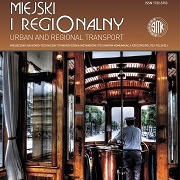
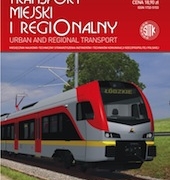 SITK RP
SITK RP 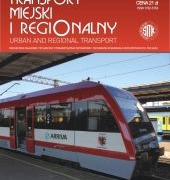 SITK RP
SITK RP 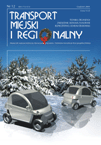 SITK RP
SITK RP 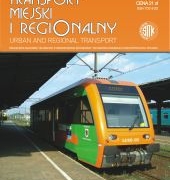 SITK RP
SITK RP 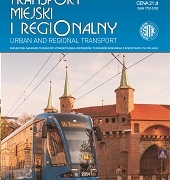 SITK RP
SITK RP 
 SITK RP
SITK RP SITK
SITK